If you’ve ever been to an Asian grocery store, you know the importance of bonito flakes.
These small dried fish are used for countless delicacies: from Japanese soups and stews to Filipino desserts.
However, many people don’t eat bonito flakes for religious or dietary reasons – so what do they use as a substitute?
Today we’ll explore some amazing options to substitute for bonito flakes that will give your dishes that delicious umami flavor without compromising taste.
So read on to find out how you can easily swap out bonito flakes for healthier and more accessible ingredients!
What Are Bonito Flakes?
Bonito flakes, known as katsuobushi, are dried and smoked skipjack tuna shaved into thin strips.
They are a staple of Japanese cuisine and are often used to flavor many dishes such as soups, stews, salads, and pizzas.
The flakes provide umami flavor and can be added while cooking or before serving.
They also have a slightly smoky and salty taste, which can help to enhance the flavor of many dishes.
Bonito flakes are often combined with other seasonings such as soy sauce, mirin, and sake.
When added to hot foods, they will curl up or “dance” – a phenomenon caused by the heat creating moisture that causes the flakes to move.
Bonito flakes can be found in most Asian markets, and some specialty stores may even carry them.
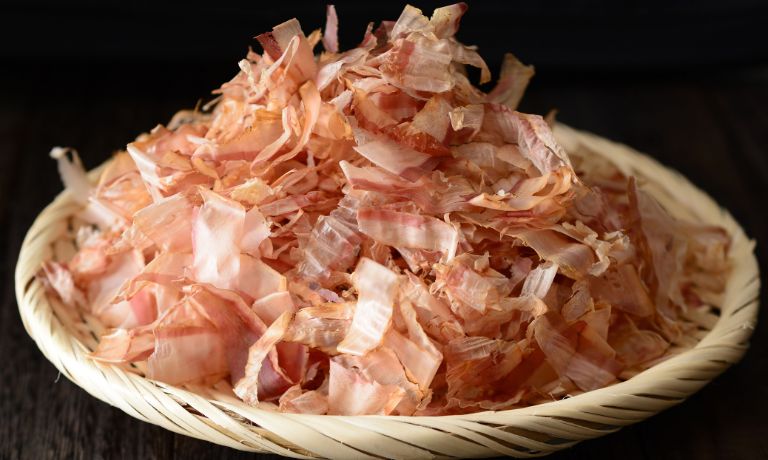
Substitutes For Bonito Flakes
Bonito flakes are a common sushi ingredient but can be hard to find in some places.
Fortunately, there are a few substitutes that work just as well.
Mackerel Powder
Mackerel powder is a fish-based food product made from finely ground mackerel.
It can be used in many recipes, including soups, sauces, and traditional dishes.
Not only does it add flavor to the dish, but also adds protein and other vital nutrients.
Due to its convenience and availability, Mackerel powder has become a popular substitute for Bonito flakes.
The flavor it adds is much milder than that of Bonito flakes, making it suitable for a wider range of dishes without overpowering other seasonings.
Additionally, Mackerel powder is lower in sodium than bonito flakes and, unlike the latter, contains no MSG. This makes it a healthier alternative.
Finally, Mackerel powder is more economical than Bonito flakes and can be found in most supermarkets.
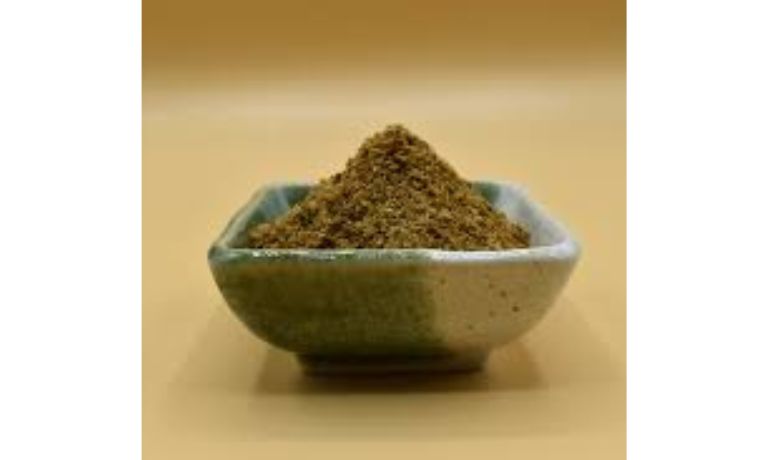
Dulse Flakes
Dulse flakes are seaweed native to the North Atlantic and Pacific coasts.
They have a salty, umami flavor similar to Bonito flakes but a milder taste.
Dulse flakes can be an alternative to Bonito flakes in many recipes, such as soups, stews, sauces, marinades, topping salads, noodles, and rice dishes.
Dulse is a great source of minerals such as iodine, calcium, iron, and magnesium.
It also contains all essential amino acids and protein in levels comparable to those found in meat or fish.
Like most seaweeds, Dulse has a high-fiber content that benefits digestive health and may help reduce cholesterol levels.
It’s also an environmentally friendly choice since harvesting dulse is much more sustainable than harvesting traditional seafood or Bonito flakes.
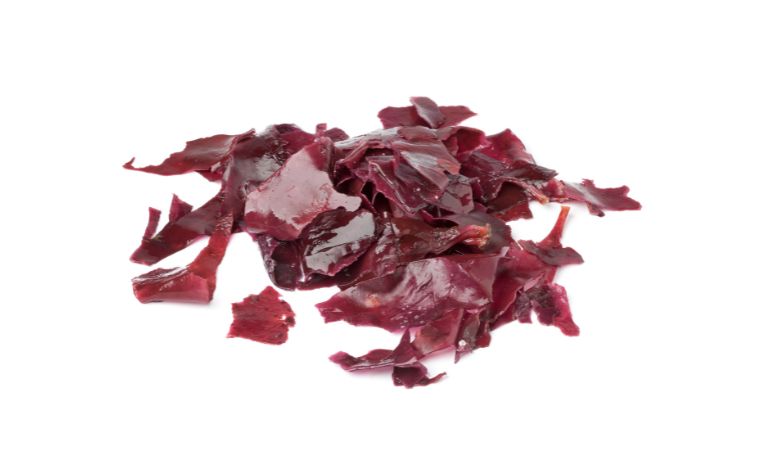
Salmon Flakes
Salmon flakes are dried pieces of salmon meat, usually cut into thin strips or flakes.
They are used as a common ingredient in Japanese cooking, particularly for making dashi, the traditional fish stock used as a base for soups and stews.
Salmon flakes have a strong umami flavor and can be added to almost any savory dish.
They can also top many dishes for added flavor and texture.
Salmon flakes can be a great substitute for Bonito flakes made from dried skipjack tuna.
Salmon flakes have a stronger, more pronounced flavor than Bonito flakes.

Kombu
Kombu is a type of edible seaweed popular in Japanese cooking.
It has a mild, umami flavor that can be used to enhance the flavor of dishes.
Kombu can be added to soups and sauces or simmered with vegetables and meats to create delicious meals.
In Japan, it is also often used as an ingredient in dashi, a soup or broth.
Kombu can be used as an ingredient instead of bonito flakes made from dried, fermented tuna.
The milder taste of Kombu makes it a better alternative for many recipes, as it will not overpower the other flavors.
Additionally, Kombu has many health benefits that bonito flakes do not offer.
It is rich in minerals and vitamins, as well as dietary fiber and protein.
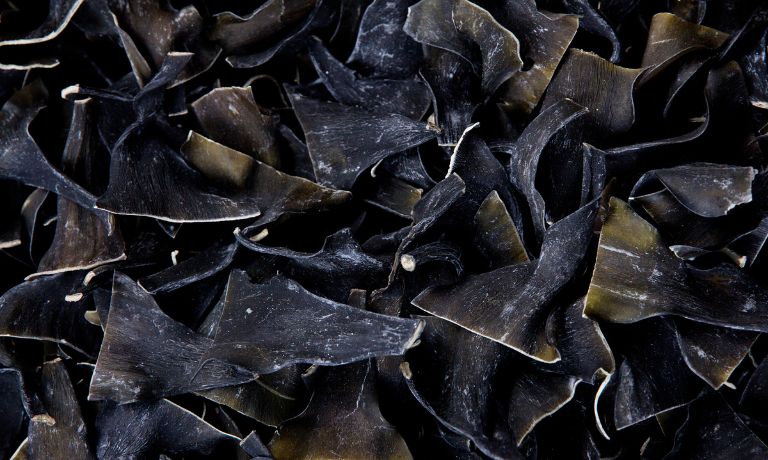
Iriko
Iriko is tiny, dried sardines, a common ingredient in Japanese cuisine.
Depending on the dish, they can be used as an accent and main ingredient.
Iriko can be used in various dishes, including soups, stews, sauces, condiments, and marinades.
They have an intense savory flavor that adds depth to the dish.
They can also be used as a topping for dishes like takoyaki, okonomiyaki, and nimono.
They are often used as a substitute for bonito flakes.
Unlike bonito flakes that must be freshly shaved from a block of dried bonito, Iriko can be reconstituted and used immediately.

MSG Powder
MSG powder (monosodium glutamate) is a food additive used to enhance the flavor of food.
It is made by fermenting sugar cane and starch, which produces the flavor molecules that give MSG its distinctive taste.
It has a strong, salty, umami flavor that can be used as an alternative to salt or other seasonings in many dishes.
In Japan, it is often used to make dashi (soup stock) or to replace bonito flakes.
It can be added to soups, stews, grilled meats, marinades, and anything that needs an umami flavor.
MSG powder is easy to use and will not overpower dishes like bonito flakes can.
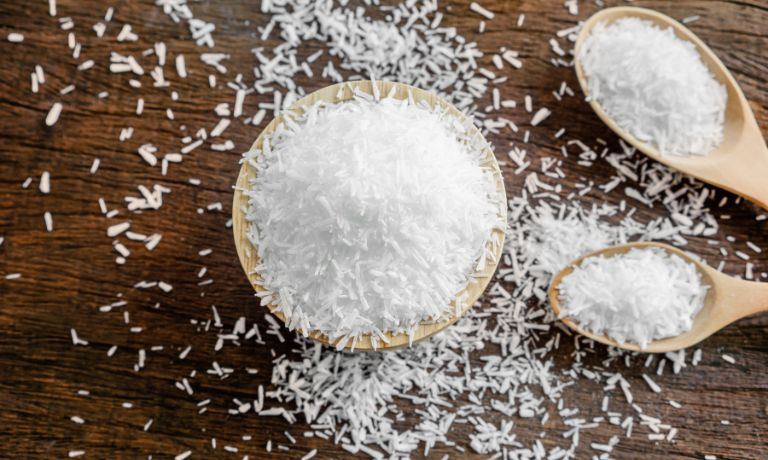
Dried Shiitake
Dried Shiitake mushrooms, or dried shiitakes, are a type of edible mushroom native to East Asia.
Dried shiitake mushrooms are also high in nutrients, making them an excellent supplement to your diet.
They are rich in B vitamins, iron, fiber, and protein, making them a great nutrition source when eaten in moderation.
Dried shiitakes can be used for their intense umami flavor as a seasoning or as an ingredient in soups and stews.
One of the most popular ways to use dried shiitake mushrooms is as a substitute for bonito flakes.
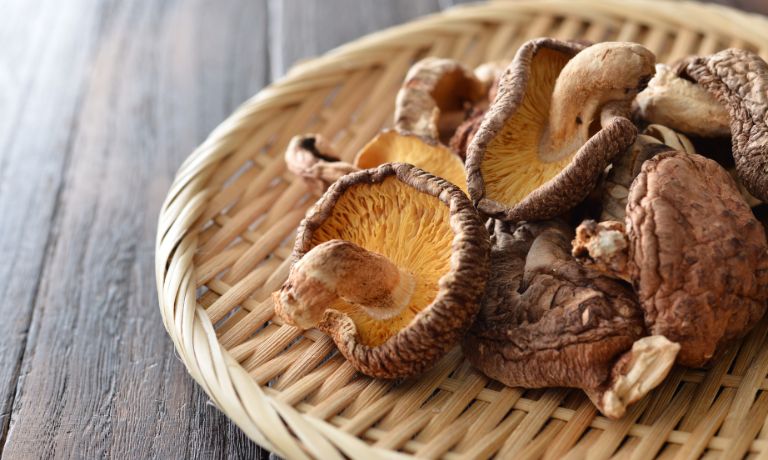
FAQs
Can Anchovies Be Substituted For Bonito Flakes?
Yes, anchovies can be substituted for bonito flakes in some recipes.
Anchovies are fattier than bonito and have a more intense flavor, so they should be used sparingly when substituting.
Are Bonito Flakes And Dashi Similar?
Bonito flakes and dashi are two different ingredients in Japanese cuisine.
Bonito flakes, or katsuobushi, are made from dried skipjack tuna and used as a condiment to add flavor to dishes.
Dashi is a soup stock commonly made with kombu (kelp) and bonito flakes, but it can also be made with other types of fish, seaweed, and vegetables.
Is Furikake Similar To Bonito Flakes?
Yes, furikake is similar to bonito flakes.
Both are made from dried, fermented tuna or other fish and are sometimes used as a topping for various dishes.
Conclusion
There are many options to substitute for bonito flakes that add umami flavor and texture to your dishes.
Salmon flakes, kombu, iriko, dried shiitake mushrooms, mackerel powder, and MSG powder are great options that provide similar flavor without overpowering other ingredients.
Each alternative has unique benefits and can be used as a substitute for traditional bonito flakes in many recipes.
Experimenting with different umami ingredients is a great way to add new flavors and textures to your cooking!

